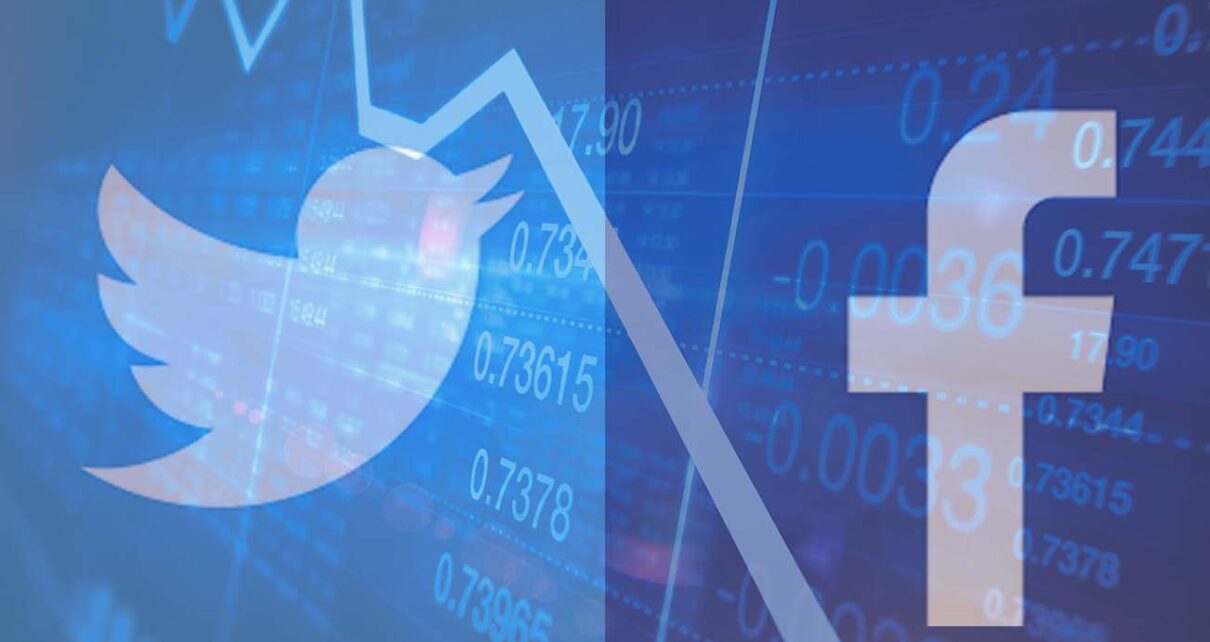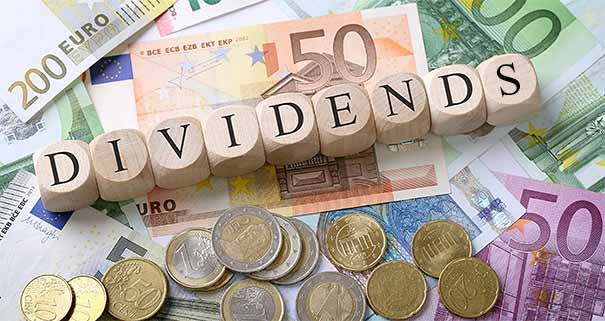
Considering Facebook and Twitter, we show with real data how to handle bad investments.
Considering Facebook and Twitter, we show with real data how to handle bad investments.
I want to share with you my experience with Facebook and Twitter making bad investments. This experience will allow us to understand how to handle them in order to make profits. I will discuss the period from mid-2018 to mid-2019. In this period, if you recall, the president of the United States, Donald Trump, declared a trade war with China. Because of this, the stock markets around the world fell sharply, in particular, Facebook and Twitter suffered a heavy loss, but they did so not only because of the trade war but also because of the Cambridge Analytica scandal that enforced governments around the world to adopt new measurements to protect the data distributed in social media platforms.
A summary of this article with some extra info appears in the following video:
First, I want to show you the investments that I made. I bought and sold shares of Facebook and Twitter on the following dates:
To verify the data given above, refer to the video, where I show the documents related to these investments.
As shown in Table I and II, with Facebook I made a profit of 5,140.73 - 1,894.46 - 2,713.85 = 532.42 EUR, while with Twitter I made a profit of 5,570.58 - 2,591.11 - 2,698.11 = 281.36 EUR. In total, adding both, I invested 9,897.53 EUR and made a profit of 813.78 EUR. In percentages, this implies that my profit was equivalent to 8.22% of my investment. The period in which I bought and sold these shares was one year; therefore, we can conclude that the annual rate of return of my total investment was 8.22%.
Considering that banks usually pay interest of 5% per year with deposits that you cannot touch, the result obtained with Facebook and Twitter is much better, but didn't I say in the title that I made a bad investment? Indeed, a return of 8.22% was a bad investment. To understand why, let's consider the following charts:


The green circles in Figs. 1 and 2 refer to the dates when I bought the shares, and the red circles refer to the dates when I sold them. These charts are given considering one-week Japanese candlesticks, that is, each candlestick (or candle) is equivalent to one week of time. For more details on Japanese candlesticks, I invite you to read the article: "Japanese candlesticks. A complete explanation for beginners."
In Figs. 1 and 2, the share prices are given in USD because Facebook and Twitter are listed on stock exchanges in the United States. In contrast, in Table I and II, the values are given in euros because I considered a European bank for my transactions. To avoid any confusion, from now on we will focus only on the charts, and therefore our discussion will be given solely in dollars. Initially, I bought 12 shares of Facebook at the value of ~180 USD per share. As you can see in Fig. 1, the share price continued to grow until it reached two months later the value of 220 USD. By then, there were rumors that investors were not fully satisfied with Zuckerberg's policies and they were thinking of withdrawing their investments. I did not pay attention to these rumors and that was my first mistake. If I would have sold my shares based on the rumors, I would have made a profit of 220 - 180 = 40 USD/share. With 12 shares, this meant a profit of 12 x 40 = 480 USD. As you can see in Fig. 1, the share price dropped dramatically in July once the rumors were confirmed, putting me at a loss in one blink of an eye. It was in the month of August that I decided to buy additional shares. I bought 18 Facebook shares at the value of ~170 USD, in this way the average price ($\overline p$) of my shares became:
The average price implies that my two purchases are equivalent to a single purchase of 30 shares at the price of 174 USD, that is, by buying additional shares at a lower price I'm averaging down the share price of my investment. In this way, Facebook would only need to cross the value of 174 USD so I can start making profits. Interestingly, just when I made my second purchase, Donald Trump declared a (trade) war with China, and because of this the whole world trembled and the stock markets fell; moreover, in the same period of time, Facebook was prosecuted by the United States and Europe due to the weak implementation they had regarding user data protection. As a result, Facebook shares dropped once more reaching 120 USD in December 2018. This put me at a loss of 120 - 174 = -54 USD/share. Considering that I had 30 shares, in total I had a total loss of -54 x 30 = -1,620 USD. As you can see in Fig. 1, it was still in 2019 that the price recovered due to the agreements that the United States and China were having; moreover, the Facebook trials in Europe and the United States ended with a monetary penalty that Facebook promised to pay. On May 03rd, 2019 (almost one year after my first investment), I sold my shares at the value of ~194 USD, thus giving me a profit of 30 x (194 - 174) = 600 USD. Can you guess how much would I have made in profits with a good investment? First, if I would have paid attention to the rumors, I would have sold the initial 12 shares at the price of 220 USD, making 480 USD in profits. Then, I would have waited for the global problems to be resolved and would have bought 30 shares probably at the value of 130 USD. Over the months I would have sold them at 200 USD, then the total profit would have been 30 x (200 - 130) + 480 = 2,580 USD, four times more of what I actually got. Do you understand now why it is considered a bad investment? It is because I truly missed the chance to make a larger profit.
Now let's discuss Twitter. I initially bought 67 shares at the price of ~45 USD. As you can see in Fig. 2 (green circle), I bought Twitter shares at a very high price. Why did I do that? Well, I made the mistake of not doing a previous analysis of my investment. First of all, because Facebook and Twitter are in the same sector, i.e., the social media sector, then if something bad happens to Facebook, it will also affect Twitter, and that's why when Facebook suffered a dramatic fall on July 26th, 2018. The following day, on July 27th, Twitter also fell drastically. In this sense, if I was already making a profit with Facebook, then a correct analysis would have been to invest in a different sector, especially because Twitter was at its all-time high value. With that move, I would have been only partially affected by Facebook's fall... Over the months, Twitter shares were worth almost ~26 USD, that is, I suffered a loss of 26 - 45 = -19 USD/share. Having 67 shares, this equated to a loss of -1,273 USD. Notice that adding the losses of Facebook and Twitter, I was having a total loss of -2,893 USD. Of course, this is not considered a real loss because I'm not selling the shares, but it gives us an idea of the position that I had. Can you imagine what would have happened if I would have invested 10 times more? My loss would have been -28,930 USD. It is quite a lot and that's why when you invest in the stock market you should keep your emotions aside because sometimes things are not going to turn out as expected. But above all, one must always have the resources to reinvest because only then you would recover quickly. In my case, based on the Facebook experience, I decided to wait for my second investment in Twitter. I carefully studied the market, paying attention to rumors and the outcome of the trade war. Once I realized that things were finally moving in the right direction, I decided to buy 90 Twitter shares at the value of ~30 USD. This gave me an average price ($\overline p$) of:
On April 25th, 2019, I ended up selling my shares at the value of 40 USD/share making a profit of 40 - 36.4 = 3.6 USD/share. That is, 3.6 x 157 = 565.2 USD in total. Note that here I omitted the commissions and exchange rates that are usually charged in the process; therefore, these values are approximations to the real ones, which are given in euros in Table I and II.
With this experience, the conclusions are:
You may think that it is impossible to know when is the right time to buy. That's not true, there are actually mechanisms that allow you to know this, we will discuss them in a different article, but for example, if you see Fig. 2 again and I ask you the following question: "Would you dare to buy Twitter shares in December 2019?" What would your answer be? In my case, I would say: “Of course, if a year ago I bought Twitter shares at 45 USD, buying them at 30 USD is quite cheap for me. Also, on average, 30 USD has been the lowest value that Twitter has had in recent years." If your answer is similar to mine, then you already have a slight idea that it is possible to know when is the right time to buy... To verify this, I invite you to check the charts of the future, those of the years 2020, 21, 22, and onward. If you do so, you may be surprised that my statement was correct.
Views: 1
Notifications
Receive the new articles in your email








